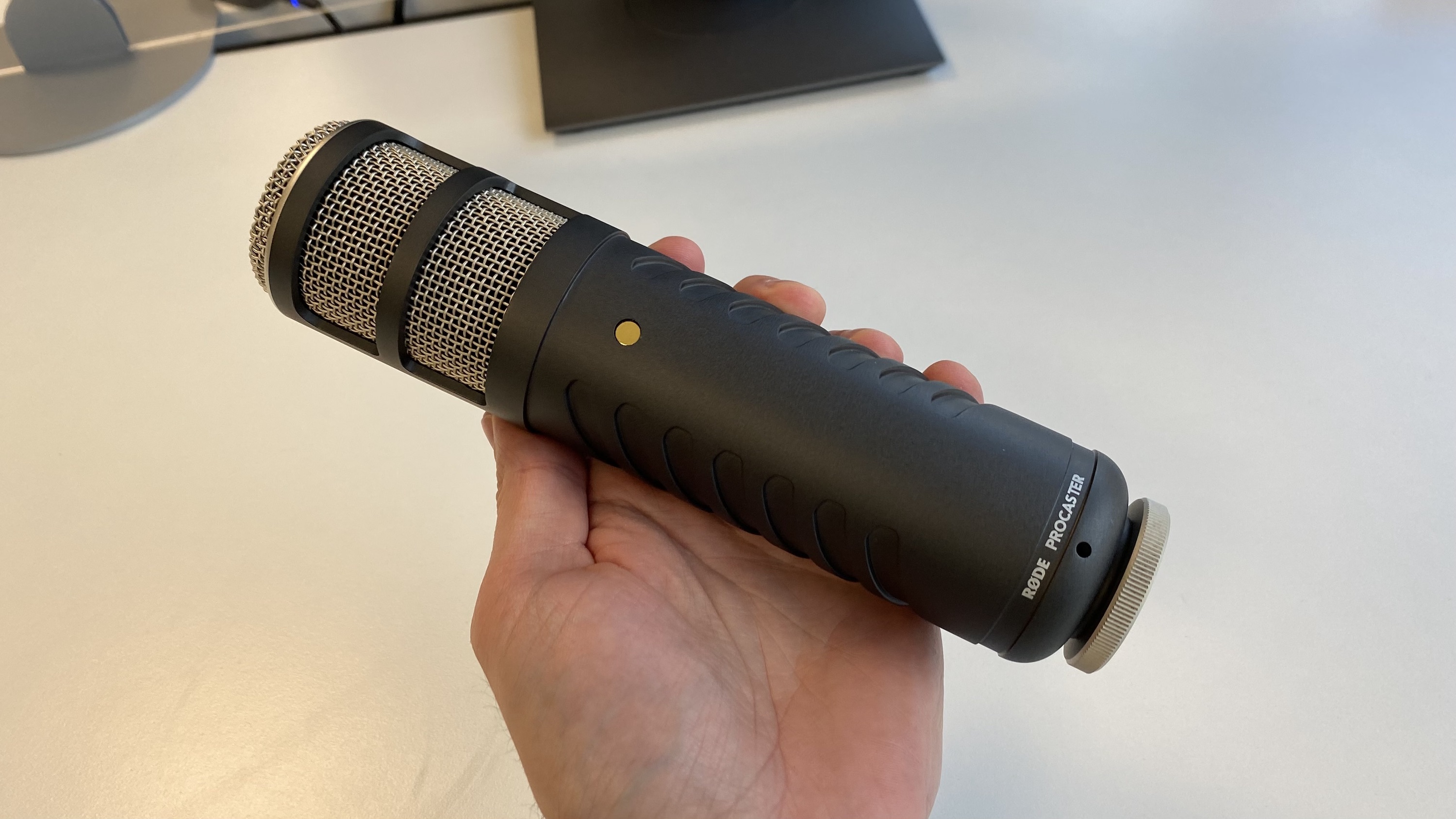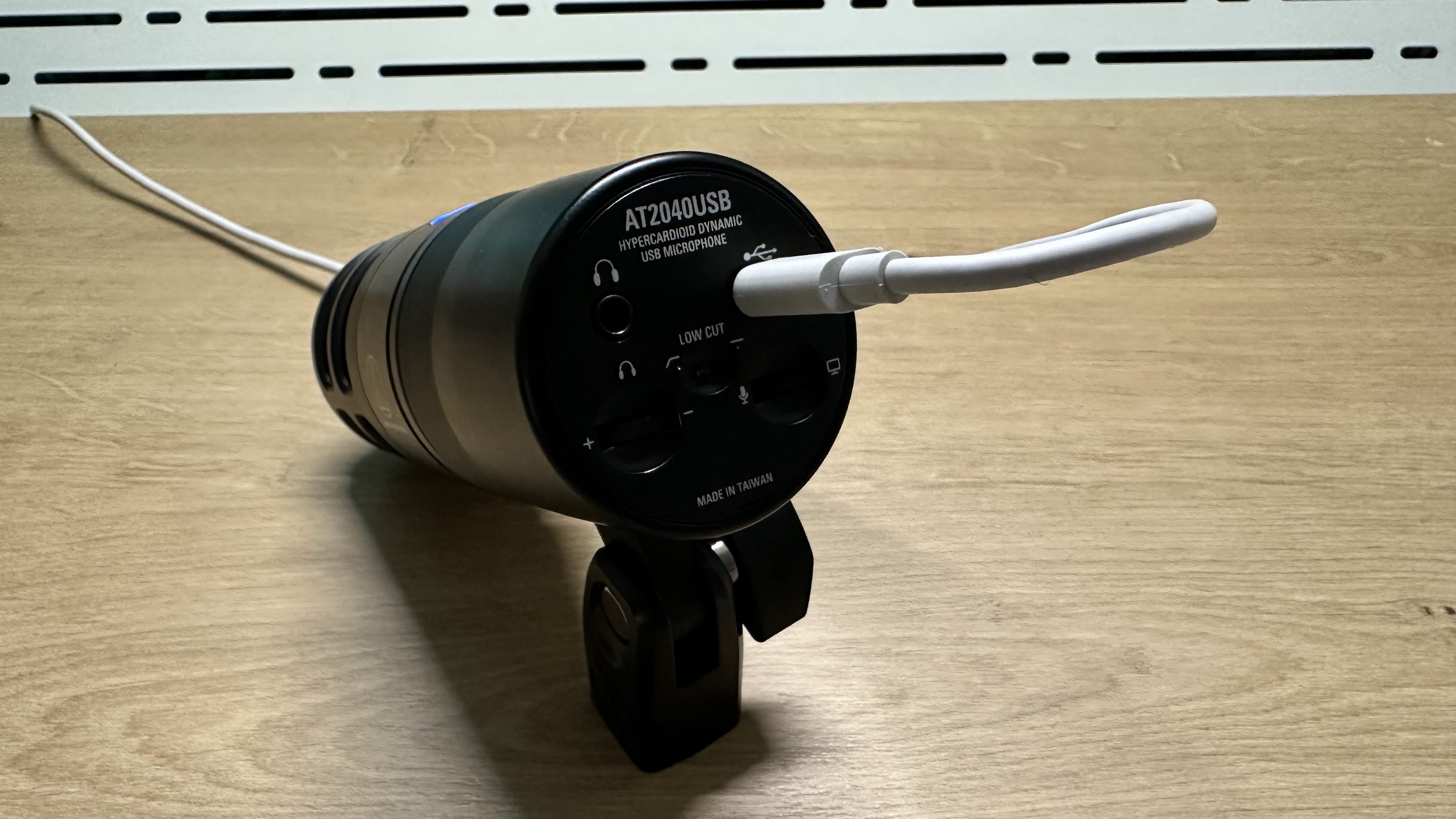MusicRadar Verdict
It’s hard to believe the price of the AT2040USB. For speech and voice applications, it’s the pick of the bunch, however for more musical pursuits you might be better looking elsewhere.
Pros
- +
Hefty build quality
- +
Superb ambient noise reduction
- +
Incredible value
- +
Rich, warm speech reproduction
Cons
- -
Capacitive mute button
- -
No stand included
MusicRadar's got your back
Audio-Technica AT2040USB review: What is it?
The Audio-Technica microphone range comprises some wonderful, cost-effective options for recording all kinds of sound sources. With the Audio-Technica AT2040USB, on review here, we have a low-cost dynamic microphone, aimed specifically at speech applications. This includes streaming, vlogging, podcasting and voiceover work, where a more versatile ‘jack of all trades’ condenser microphone might not excel. It does this by opting for dynamic functionality, which is great for speech on account of their greater capability for sound rejection, and more forgiving nature when it comes to recording lower-end frequencies.
Where a condenser excels when you’re looking for fine detail, particularly in the treble frequencies, a good dynamic can make any voice sound rich, smooth and radio-friendly.
The AT2040USB is the USB version of Audio-Technica’s existing (and very well thought of) AT2040, only it swaps the traditional XLR connection for, you guessed it, USB. This will appeal on a number of levels, not least the fact it can be connected directly to a laptop or tablet and will just work without requiring an additional mixer or audio interface. Add in the fact you can connect a set of studio headphones directly to the mic and it makes for the ultimate in simplicity and portability. It features a hypercardioid pickup pattern, so is great for rejecting ambient noise too. Whatever you point it at, that’s what you’re getting.
It’s not like we haven’t been here before though. Right now we are not short of versatile USB microphones, even with the added caveat of being specialist speech mics. Brands like Shure, Se Electronics and Rode offer similar products, largely offering the same features, and similar prices. So how can Audio-Technica’s budget USB mic stand out in such a crowded market? Let’s take a look.
Audio-Technica AT2040USB review: Performance & verdict

The first thing I noticed when I unboxed the AT2040USB was the weight of it. Being so used to testing USB condenser mics, which can be relatively dainty and lightweight, I was pleasantly surprised by the heft of the 2040. Coming in at 600g, and around the same height as a can of Coke, this isn’t necessarily a mic you’d take out on the road easily. That’s not to say it’s in any way bulky, more that we can see this being the centrepiece of a studio environment more than we see it being hooked up to your laptop in your local park, for example.

Build quality is sound, with the black metal chassis looking like it’d offer plenty of protection against the occasional drop or ding. Being a dynamic microphone, it’s inherently more capable of withstanding a bit of rough and tumble than a condenser. Still, it’s nice to feel reassured by a product’s build quality regardless. I did find the metal attracted fingerprints easily though, so be careful if you’ve got greasy fingers and that sort of thing bothers you.
On the bottom of the mic, you’ve got the controls and connections. Aside from the USB-C port, there’s a 3.5mm headphone connection, with a slider volume control for that, and another slider which allows you to blend computer audio and mic audio through the headphones. Finally, you’ve got a small switch which activates a low-cut filter, which I’ll come back to shortly. There’s also a capacitive button on the mic's body, which is used for muting and unmuting your voice. I was not, it must be said, particularly fond of this. Sometimes buttons are better just being actual buttons.
I started by testing the AT2040USB’s basic speech recording capabilities. Plugged directly into my laptop, and recording into Adobe Audition, I was genuinely surprised with the results, in a good way. Background noise, so often the scourge of the hobbyist recording, was dealt with impeccably. The low-cut filter, when combined with the mic’s hypercardioid pickup, made for a potent set of tools in the speech recorder’s arsenal.

The sound you get is noticeably mid-to-low heavy, but this is a feature rather than a flaw. Honestly, I hadn’t heard my old broadcast voice captured so well in a long time - since reviewing the Shure SM7B actually. It’s a long time since I worked in a broadcast studio, but the AT2040USB made all the old memories come flooding back. There was a pleasing clarity and weight to the recordings and virtually no need for any kind of background noise reduction processing. For the price, I was genuinely impressed.
It’s not a perfect mic. The capacitive touch mute button felt unnecessary to me, for example, and there’s little joy to be had in the upper treble frequency range. It also doesn’t have that magical ability to give anyone a silky, velvet baritone that you get from a Shure SM7B, but then the AT2040USB costs around a third of the Shure mic. It also doesn’t require an additional interface or any preamps, so there’s a saving there too.
Whether you’re streaming, vlogging or podcasting, or even moonlighting as a voiceover artist on a budget, the Audio-Technica AT2040USB is a seriously impressive microphone. Its use outside that scope might be limited (although it would cope pretty well with loud guitar amp cabinets we’d wager) but as a specialist mic, this one is easy to recommend.
Audio-Technica AT2040USB review: Hands-on demos
Podcastage
Tobias G Venus
JohnReavesLive

Audio-Technica AT2040USB review: Specification
- Type: Dynamic
- Sample rate: Up to 96kHz
- Bit depth: 16-bit/24-bit
- Frequency range: 80Hz to 16kHz
- Polar pattern: Hypercardioid
- Connectivity: USB-C
- Contact: Audio-Technica
Chris Corfield is a journalist with over 12 years of experience writing for some of the music world's biggest brands including Orange Amplification, MusicRadar, Guitar World, Total Guitar and Dawsons Music. Chris loves getting nerdy about everything from guitar and bass gear, to synths, microphones, DJ gear and music production hardware.













